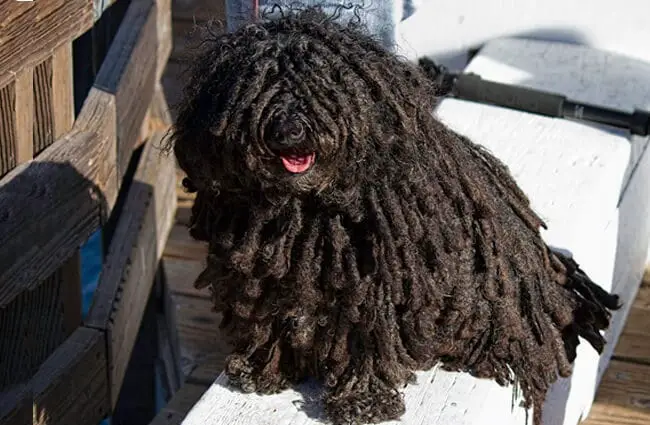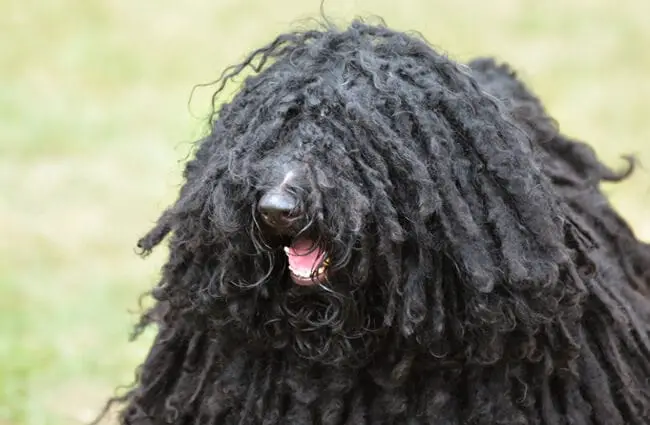The Puli, a striking and energetic herding breed originating from Hungary, is instantly recognizable due to its unique corded coat. This is a natural process that allows the breed to thrive in harsh climates, rather than a deliberate style choice. More than just a pretty face, the Puli is highly intelligent and active, requiring a dedicated owner who understands its needs. This comprehensive guide delves into the history, temperament, care, and fascinating characteristics of this extraordinary breed.

A Glimpse into History
The Puli’s roots trace back over a thousand years to the migrating Magyar tribes who settled in what is now Hungary. These early Magyars relied heavily on dogs for herding livestock, and the Puli emerged as a vital part of their agricultural lifestyle. Evidence suggests that the Puli shares ancestry with other ancient Asian herding breeds. Initially, the Puli was not considered a breed exclusive to nobility; it was the common farmer’s working dog, valued for its stamina, intelligence, and weather resistance. The corded coat provided crucial protection against harsh Hungarian winters and the teeth of livestock. For centuries the Puli remained largely unknown outside of Hungary. The breed’s popularity began to grow in the West following World War II, though it remains relatively rare even today.
Physical Characteristics
The most defining feature of the Puli is its coat. This isn’t a coat of hair but naturally forming cords, similar in texture to dreadlocks. These cords develop as the puppy’s wavy undercoat and outer coat grow and interlock. The purpose of this unique coat is to provide insulation and protection from both cold and heat, as well as to prevent skin abrasions during herding. The cords require significant maintenance to prevent matting and skin issues, which will be discussed later.
Beyond the coat, the Puli is a medium‑sized dog. Adult males typically stand between 16 and 18 inches tall at the shoulder and weigh between 25 and 35 pounds. Females are slightly smaller, generally measuring 15 to 17 inches and weighing 20 to 28 pounds. The Puli has a sturdy, muscular build, reflecting its working heritage. Common coat colors include black, white, and shades of grey. A rusty or faded appearance can occur with age.

Temperament and Behavior
The Puli is renowned for its intelligence and trainability. They are quick learners and eager to please, but also possess a strong independent streak. Early socialization and consistent training are essential to channel their energy and prevent behavioral issues. These dogs thrive on having a job to do. Agility, obedience, herding trials, and even puzzle toys can help keep them mentally stimulated.
Pulis are naturally protective of their family and territory, making them excellent watchdogs. However, this protectiveness can sometimes lead to excessive barking or distrust of strangers. Proper socialization from a young age is crucial to ensure they are well adjusted and friendly toward new people and animals. They are not naturally aggressive, but their strong guarding instincts need to be managed.
This breed is energetic and requires a significant amount of exercise. Daily walks, runs, or play sessions are a must. Without sufficient physical and mental stimulation, Pulis can become bored, destructive, and restless. They are not suited to a sedentary lifestyle.

Care and Maintenance
The Puli’s unique coat requires considerable attention. While the cords themselves don’t require brushing, they need to be kept clean and separated to prevent matting. Bathing is infrequent, as frequent washing can weaken the cords and lead to skin irritation. Instead, spot cleaning with a damp cloth is recommended. The cords should be checked regularly for dirt, debris, and parasites.
Regular veterinary checkups are crucial to maintain the Puli’s overall health. Potential health concerns include hip dysplasia, progressive retinal atrophy, and certain autoimmune diseases. Responsible breeders screen their dogs for these conditions to minimize the risk of passing them on to future generations.
The Puli is a relatively healthy breed, but early detection and treatment of any health issues can significantly improve their quality of life. A balanced, high‑quality diet appropriate for their age and activity level is essential.
Is a Puli Right for You?
The Puli is a rewarding companion for the right owner. However, this breed is not for everyone. They require a dedicated owner who can provide plenty of exercise, mental stimulation, and consistent training. A Puli is best suited to an active family with a spacious yard or access to outdoor activities. They thrive in environments where they have a job to do and can utilize their intelligence and energy.
Potential owners should be prepared to commit to the significant grooming requirements of the Puli’s coat. This is not a low‑maintenance breed. If you are looking for a calm, quiet companion, the Puli is likely not the right choice. However, if you are seeking an intelligent, energetic, and loyal companion who will keep you entertained for years to come, the Puli may be the perfect addition to your family.

Beyond the Basics: Advanced Considerations
For those seriously considering a Puli, delving deeper into breed‑specific nuances is important. The corded coat, while striking, isn’t simply a matter of letting it grow. The process of cord formation often requires careful intervention, particularly in puppies. Early separation of the coat into sections is crucial, and the cords must be maintained to prevent them from becoming excessively thick or matted. Some owners choose to hand separate and maintain the cords, while others work with professional groomers experienced in corded breeds.
Understanding the Puli’s herding instincts is also essential. Even if you don’t have livestock, this breed may exhibit a tendency to “herd” children or other pets. Redirecting this behavior with appropriate training and activities is crucial.
Finally, responsible breeding practices are paramount. Seek out breeders who prioritize health testing, temperament, and conformation. A well‑bred Puli is more likely to be a healthy, well‑adjusted companion.
The Puli is a truly remarkable breed, steeped in history and possessing a unique character. With the right care and commitment, this intelligent and energetic dog will enrich your life for many years to come.






![Red Angus Closeup of a beautiful Red Angus cowPhoto by: U.S. Department of Agriculture [pubic domain]https://creativecommons.org/licenses/by/2.0/](https://animals.net/wp-content/uploads/2020/03/Red-Angus-4-100x75.jpg)

